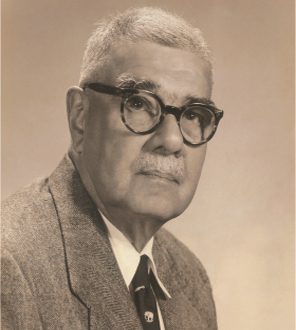Related Research Articles
Burgher people,also known simply as Burghers,are a small Eurasian ethnic group in Sri Lanka descended from Portuguese,Dutch,British and other European men who settled in Ceylon and developed relationships with native Sri Lankan women. The Portuguese and Dutch had held some of the maritime provinces of the island for centuries before the advent of the British Empire. With the establishment of Ceylon as a crown colony at the end of the 18th century,most of those who retained close ties with the Netherlands departed. However,a significant community of Burghers remained and largely adopted the English language. During British rule,they occupied a highly important place in Sri Lankan social and economic life.
Sir Richard Francis Morgan was a Ceylonese lawyer,who served as the 13th Queen's Advocate of Ceylon and acting Chief Justice of Ceylon. He was the first Asian in the British Empire to receive a Knighthood and first Ceylonese to be a member of the Governor's Executive Council and was an unofficial (Burgher) member of the Legislative Council of Ceylon. He was the Crown Advocate who prosecuted famed bandit Saradiel.

James Aubrey Martensz was a Ceylonese lawyer and politician.
Vivian Roy Stanley Schokman was a Ceylonese politician and physician.

James Alfred Ernest Corea was a Sri Lankan public official. He was born in 1870. His father was Charles Edward Bandaranaike Corea who was a Proctor of the Supreme Court. His mother was Henrietta Seneviratne. J.A.E Corea's father died in 1872 when his youngest son Victor was just one. His wife Henrietta was a widow from the age of 21.
Reginald Sydney Vernon Poulier,was a Ceylonese statesman and civil servant.
James Richard Weinman was a Ceylonese lawyer,judge and legislator. He was a member of the Legislative Council of Ceylon and had served as District Judge of Colombo.
Sir John Charles Samuel Grenier was a Barrister and the 17th Attorney General of Ceylon. He was appointed on 30 September 1886,succeeding Francis Fleming,and held the office until his death in 1892. He was succeeded by Charles Layard.
Peter Daniel Anthonisz was a well-known burgher doctor who was the first Ceylonese to obtain an M.R.C.P. and F.R.C.S. He was also the inaugural president of the Ceylon Branch of the British Medical Association and a member of the Legislative Council for nine years.
John Leonard Kalenberg van Dort,commonly known as J. L. K. van Dort,was a 19th-century Ceylonese artist of Dutch Burgher descent.
Justice F. H. B. Koch,QC was a Ceylonese judge and lawyer. He was a Judge of the Supreme Court of Ceylon and member of the Legislative Council of Ceylon.

The Dutch Burgher Union of Ceylon,known commonly as the Dutch Burgher Union (DBU),is an organisation of Dutch Burghers in Sri Lanka. It was established on 18 January 1908 by Richard Gerald Anthonisz.
Frederick Charles Loos was a Ceylonese lawyer and politician.

Theodore Hugh Rosslyn Koch was a Ceylonese businessman,company director and politician.
George Alfred Henry Wille was a Ceylonese proctor,notary public,journalist and politician.
Thomas Edward Barnes Skinner was the Postmaster General of Ceylon,between 1871 and 1896.
Egbert Bletterman,was the first official Postmaster General of Ceylon,serving from 1815 to 1817.
Dr William Gregory van Dort was a Ceylonese Burgher physician and politician.
Frederick Henry de Vos was a Ceylonese legal practitioner,genealogist and historian. He was fluent in Dutch,English,French and Flemish and published a number of papers relating to the Dutch East India Company involvement in Ceylon.
James Adrianus Martensz was a proctor and member of the Legislative Council of Ceylon (1865-1872).
References
- ↑ The Ceylon Directory: Calendar and Compendium of Useful Information" (1866). LII
- ↑ "Ceylon Almanac and Compendium of useful information". Colombo: Govt. Press. 1833. nla.obj-24678246. Retrieved 16 November 2022– via Trove.
- ↑ "The Ceylon Almanac and Compendium" (PDF). Colombo: A. De Krester. 1850. p. 133.
- ↑ Amerasinghe, A. R. B. (1986) The Supreme Court of Sri Lanka: The First 185 Years. Sri Lanka Sarvodaya Book Publishing Services
- 1 2 Toussaint, J. R. (July 1945). "Journal of the Dutch Burger Union of Ceylon" (PDF). Burgher Members in Council. Dutch Burgher Union of Ceylon. XXV: 2-3.
- ↑ Muller, J. B. "A Burgher perspective on politics in Sri Lanka today". The Daily News . Retrieved 12 November 2022.
- ↑ Journal of the Dutch Burgher Union of Ceylon (1909) Dutch Burgher Union of Ceylon: 33
- ↑ Digby, William. Forty Years of Official and Unofficial Life in an Oriental Crown Colony: Being the Life of Sir Richard F. Morgan, Kt., Queen's Advocate and Acting Chief Justice of Ceylon. Sri Lanka: Higginbotham (1879)